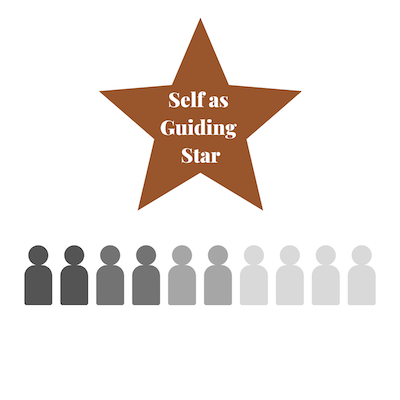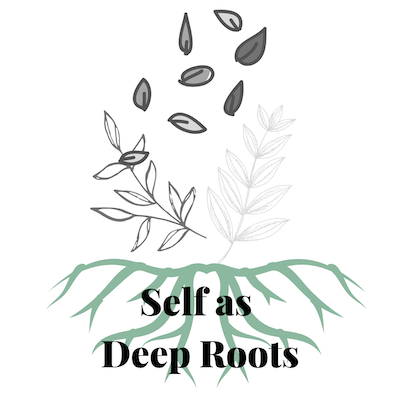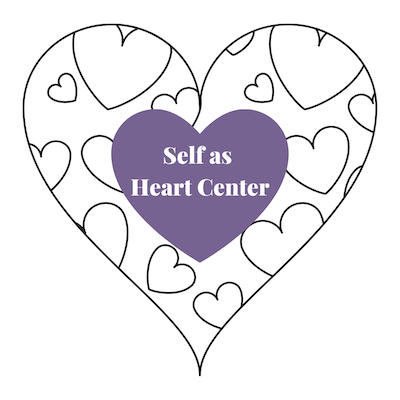Internal Family Systems Basics
Uncringe IFS for low-woo thinky thinkers.

You may have noticed that “Internal Family Systems” (IFS) has been having a moment around the ingroup Twitter (c. 2020). According to the books and posts that I skimmed previously, IFS seemed unobjectionable. In fact, I realized I’d already been using IFS concepts and language intuitively in my work with clients, and figured I’d leave it at that.
But, in true “course junkie” fashion, when Michael Ashcroft of Alexander Technique renown mentioned this IFS for coaches course, I caught some FOMO. The course has now ended, and I learned a good bit.
A couple people who I told about this course asked me for brief explanations of IFS, and so now I’m writing this here (1) to consolidate the present state of my learning and (2) for your potential benefit, too.
Basic IFS Worldview
The human agent is essentially multiple, not unified. Even a supremely healthy and well-functioning human houses any number of “parts” whose purposes, methods, and characteristics vary.
Instances of inner conflict, dissonance, indecision, and stuck-ness are the natural result of our multiplicity. If you’ve been searching for a durable internal alignment and cohesion without much luck, it’s probably not your fault so much as the result of this misunderstanding about the nature of the self.
Multiplicity doesn’t mean we can’t do anything about this complex and even frustrating inner landscape, though. Instead of amputating or repressing parts, our ongoing task is to get to know the parts, to observe their interrelationships, and to help them to live together realistically harmoniously in an (drumroll, please) internal family system.
Kinds of Parts
Your inner parts are surely diverse (and also different from mine), but we can think of them as belonging to a few basic categories:
Managers are proactive, goal-oriented parts (though they may not share the goals you have tried to set explicitly for yourself). They attempt to run the show, day-to-day.
Firefighters are reactive defenders. They spring into action when something of value is threatened (again, not necessarily your professed values, but your de facto values, as adopted by your system).
Exiles are like damaged inner children, born of past difficulty and trauma. These personified life lessons join other parts at the inner table to help you make the most of hard-won experience. But sometimes the exiles react as false positives to actually-different situations, or the exile’s cure to some difficulty eventually becomes worse than the disease.
Self
So what is the self? Well, it’s the thing in there that isn’t one of those parts. Self is undamaged and whole, it is unburdened by the past and ready to approach the future. Even if you’ve Seen Some Shit and earned your battle scars, (allegedly) the self is still in there somewhere, though perhaps drowned out by all the cacophony of parts.
You’re probably in touch with your own self (or the self of someone else) when these qualities begin to show through:
- Curiosity
- Calm
- Confidence
- Compassion
- Clarity
- Creativity
- Courage
- Connectedness
Though I’m sort of allergic to this term, it’s apt here: the self is fundamentally “abundant.” Self offers an essentially spacious orientation towards people, possibilities, projects, time, and energy.
To borrow from my most significant pre-existing theoretical framework, a hypothetically perfectly virtuous person would live from self. She is centered in the face of emotional turbulence and tough choices. Her phenomenology is spacious enough to harbor the messiness of life without collapsing into it.
The most interesting thing from that whole course was the claim that: Self is not afraid of pain. Since self is courageous and confident, it knows that sometimes pain is either inevitable or worth it. When you notice yourself flinching or retreating from pain, that’s coming from a part - perhaps a stuck-on-high-alert or neglected one.
I've spoken of self in a variety of ways - choose your metaphorical poison:
Sometimes, self seems high, like it looks down on the fray while remaining above it: Guiding Star Self

Other times, self seems low, as in foundational: Deep Roots Self

Or self may seem at your core, so to speak: Heart Center Self

“Parts Work” for Fun & Profit
When you are trying to sketch the landscape of a person’s parts, or when a part pops up during a regular conversation, it often makes sense to explore that on purpose. Otherwise, it may remain difficult to explain surface-level “confusing” behaviors. Or, the part may in effect veto further work on the topic (leading to stalled conversation or sabotaged coaching “homework”).
Sometimes it is possible for a practitioner and client to speak about the client’s part. But if that part is very noisy, sensitive, oppressed, etc then the practitioner can try speaking directly to the part itself (i.e. the client at this time is unable to separate self - “unblend” - from the noisy part).
(Note: a therapist or coach may also notice themselves devolving into one of their parts when a client “triggers” them in some way, ouch!)
In time, with trust and care, a client can become unblended from each of her parts and hold them at arm’s length for consideration and even befriending. The practitioner is responsible for remaining as unblended as possible, too.
Particularly extreme parts may need to be “unburdened” - relieved of their impossible or unnecessary tasks. This proceeds via some circuitous path involving similar steps - befriending the part, listening to its fears, reparenting its wounds, etc.
Then the conversation/therapy/coaching can occur truly self to self - from the partners’ best, highest inner resources - rather than down in the weeds of fear, jealousy, anger, shame, etc.
The difficult emotions and damaged parts don’t disappear, but they no longer masquerade as self and don’t give the self direct orders. Instead, the parts become well-cared-for, in the way that weak and struggling members of healthy social groups can expect as their birthright.
2 Woo 4 U
If at some point this grows too woo, feel free to think of a part as not anthropomorphized: as a mental module, pattern, or habit instead. The substantive tasks remain the same - what is the module? Where did it come from? What are its assumptions? Is a correction or reframing in order? Does being harsh to yourself work, or can we try something gentler?
IFS is basically a systematization and refinement of colloquial practices (e.g. “Part of me wants X, but another part wants Y!). So you don’t need to import a substantive worldview to get the thing off the ground.
And if you don’t want to draw your parts, name them, or tell me their colors, that’s totally fine.
Example: The Part That Protects You From Perpetual Work
Before I thought explicitly in IFS terms, I’d noticed that coaching clients often benefited from building self-trust around their productivity practices. Clear starting and ending times for work days (and even work sessions within the workday) send the internal message that it’s safe to start working even when the work is tough.
In the absence of clear work start and end times, people face a higher likelihood of procrastinating at getting started. After all, if the work is (or feels) never-ending on the back end, the only way to reduce the load is to cut it off at the front!
Now I realize there is a natural way to think of this in parts terms (though it’d vary from client to client). Basically, there is a manager that wants to get started, to get cracking at the “productive” stuff and keep going and going. But there’s also a firefighter who (sort of rightly) senses that the insane taskmaster is doing its thing, and the firefighter is dead set on preserving needed downtime. There could also be an exile in the mix, a product of tiger parenting or whatever.
Now, the compromise (i.e. procrastination) here sucks:
- the manager fails at getting down to work,
- the firefighter fails at securing restful downtime because procrastination feels bad,
- the exile is stuck reacting against a parent who’s no longer present or in charge,
- the self feels tossed about and non-sovereign
What’s the solution? Well you can’t just lop off the exile or the firefighter, you can’t straightforwardly hand the reins to the manager.
Instead, you can and should get to know these parts and build a relationship with them (all of them - “no bad parts”). From self, you can credibly commit to get the parts what they need, even as you increasingly decline to blend/collapse into any one of them at the painful expense of the other.
Questions & Reservations about IFS
First and foremost, I’m not certain I understand the ontology here - are “parts” meant to be spoken of metaphorically, or taking literally? However it also doesn’t much matter for my practical purposes, and also the ontology of any potential mental entity would be… controversial.
I also still have no desire to do this stuff completely explicitly - it reads as overwrought to me, almost creepy, yet to each their own? Free agency allows me to steer the hell clear of lame turf wars between “therapy” and “coaching,” within types of modality, etc so I will keep taking full advantage of that.
Next, my skepticism flared when the IFS instructors explained that self is always in there, perfect and undamaged, even when the parts get traumatized and run amok. If you are currently rarely, if ever, able to “access” self - then what does it even mean to insist that it’s still there? Strikes me as a potentially useful fiction to motivate some clients, but a likely fiction nonetheless.
Last but not least, I’m a bit less sanguine about how well this stuff works than others appear to be. On the one hand, inner work is notoriously more-art-than-science, often involving two steps forward and one step back. So I wouldn’t want to issue IFS an unfair standard to meet, for any modality.
Yet… to extend the metaphor, some families face way steeper challenges at getting along than others. Some members are more flexible than others, some combinations of members just don’t work (even if individually they’re fine). If you’ll permit me an overused quote:
““All happy families are alike; each unhappy family is unhappy in its own way.”
According to my personal interpretation of IFS, it seems we were sentenced at birth to permanently host somewhat chaotic inner families. One way of looking at this is that the inner family is fated for unique unhappiness, a la Tolstoy.
But another way to look at this is just to think of inner family “happiness” as having a different character than we previously imagined.
Maybe every happy inner family is not alike. Success conditions cannot be determined apart from the context of the task at hand.
Maybe our personal, possible best selves are as various and fluid as our motley crews of parts: hitchhikers, orphans, tryhards, slackers, strivers, bosses, supplicants, navel-gazers, soldiers, party-goers, and beyond.
Want To Talk About Your Parts?
I'm offering some free Parts Practice sessions to give myself a low-stakes opportunity to do more of this IFS stuff.
If you are stuck or confused in some way, this might be a good opportunity to dig into what's there and perhaps sketch a path towards next steps for you. Check the available times by clicking the blue bar here:
Schedule a Free Parts Practice Session(from September 2021 - I'll try to remember to remove this later but if I forgot please feel free to book a regular intro session instead).
Pamela J. Hobart - Philosophical Life Coaching Newsletter
Join the newsletter to receive the latest updates in your inbox.